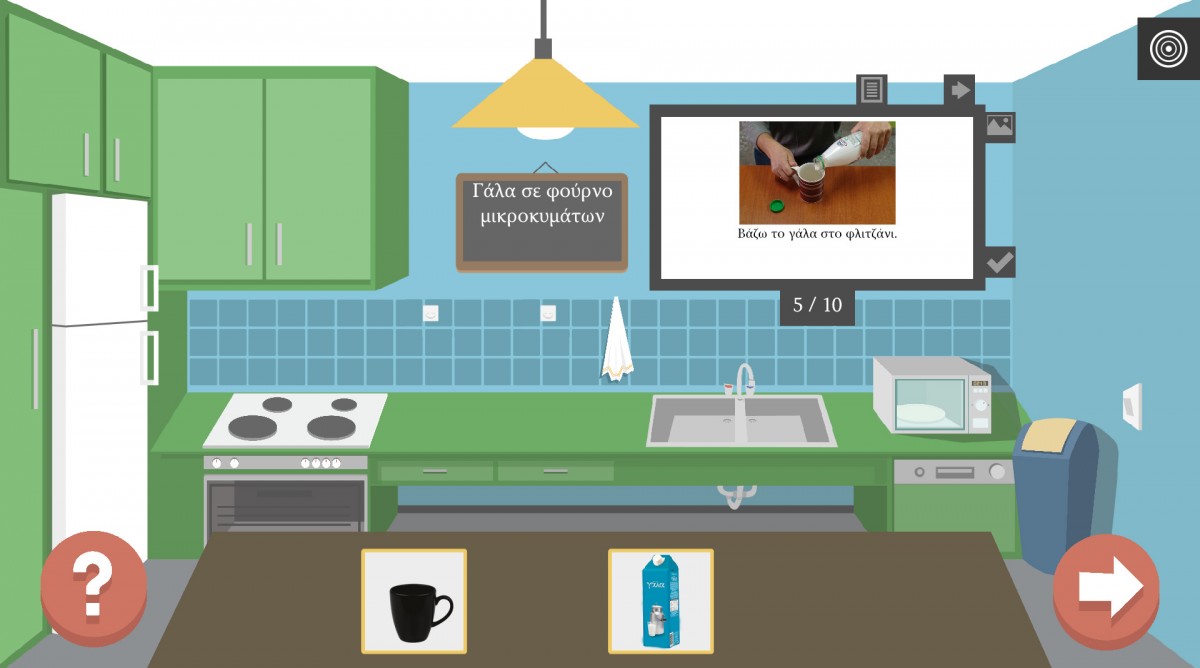
CocinAR is an Augmented Reality system, utilizing tangible objects and supporting card-based interaction, for teaching cooking skills to children through a playful approach.
CocinAR is an Augmented Reality (AR) system that has been developed to help teaching preschoolers and/or children with cognitive disabilities how to prepare simple meals. It includes a variety of exercises and mini games, aiming to instruct children: (i) which meals are appropriate for breakfast, lunch, and dinner, (ii) how to cook simple meals (e.g., bread with butter and honey, lettuce salad, pasta with tomato sauce, etc.), and (iii) fundamental rules of safety and hygiene that should be applied during the food preparation process. The system supports multimodal input, utilizing tangible objects on a table-top surface and multimedia output available in textual, auditory and pictorial form. Profiling functionality is supported, allowing system to adapt to the needs and preferences of each individual user, while an extensive analytics framework that allows the trainers to monitor the progress of their students is provided.
CocinAR consists of a computer, a high-resolution projector, a simple wooden table, an infrared camera and a high-resolution camera. With the aim to support an immersive user experience, the system is designed to “camouflage” itself in a way that none of the equipment used is visible to the users, leaving visible only the plain wooden table.